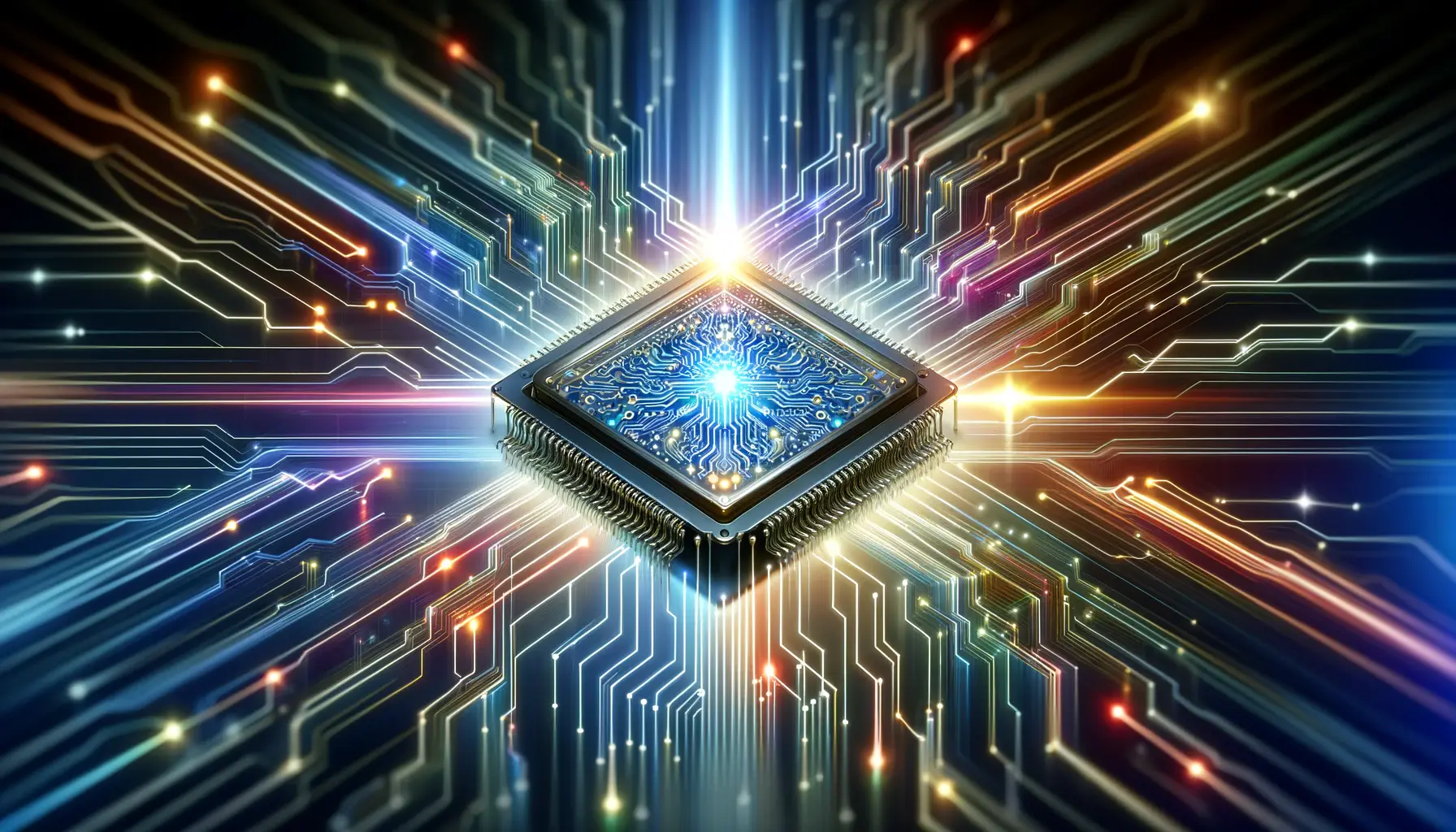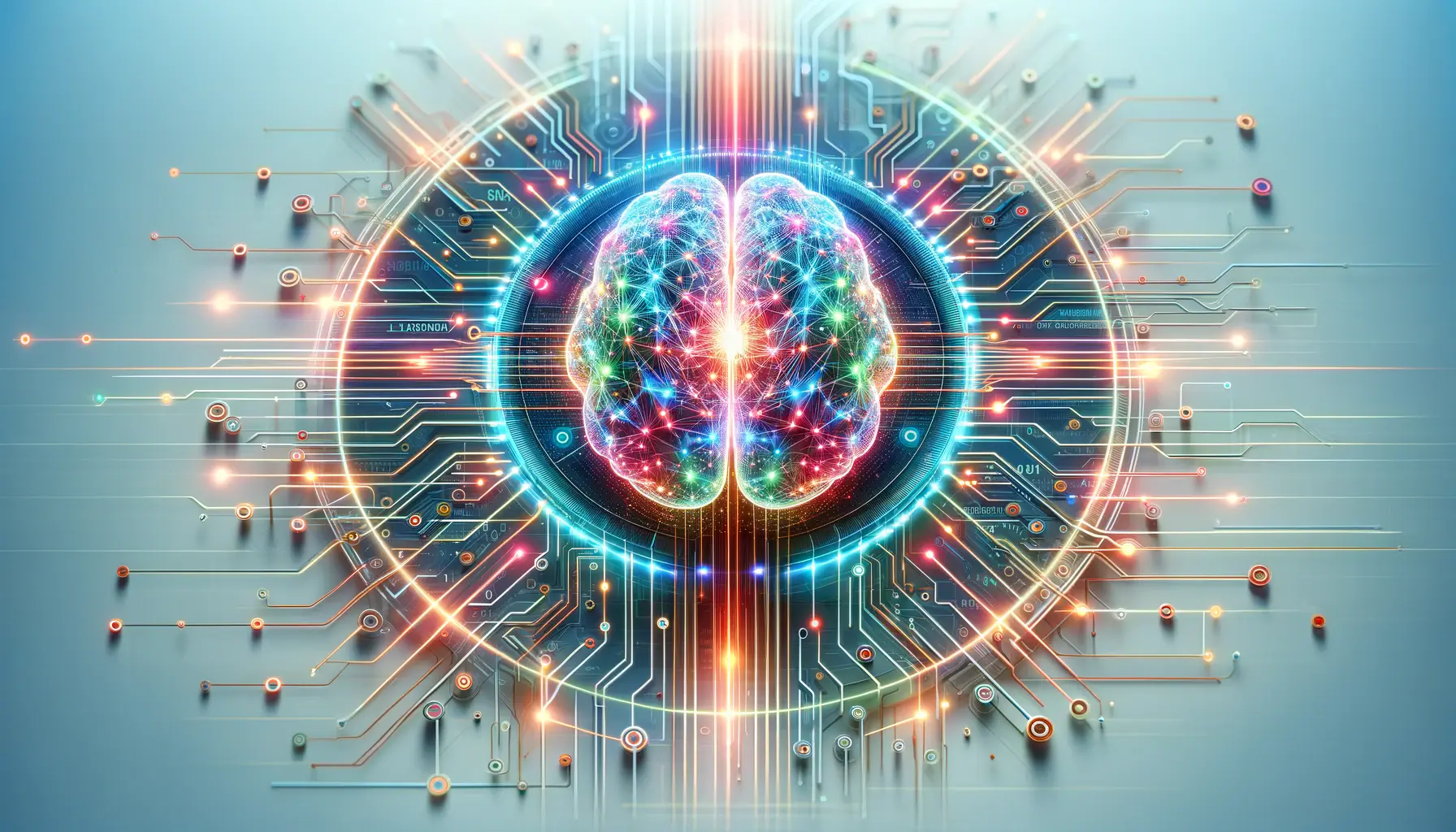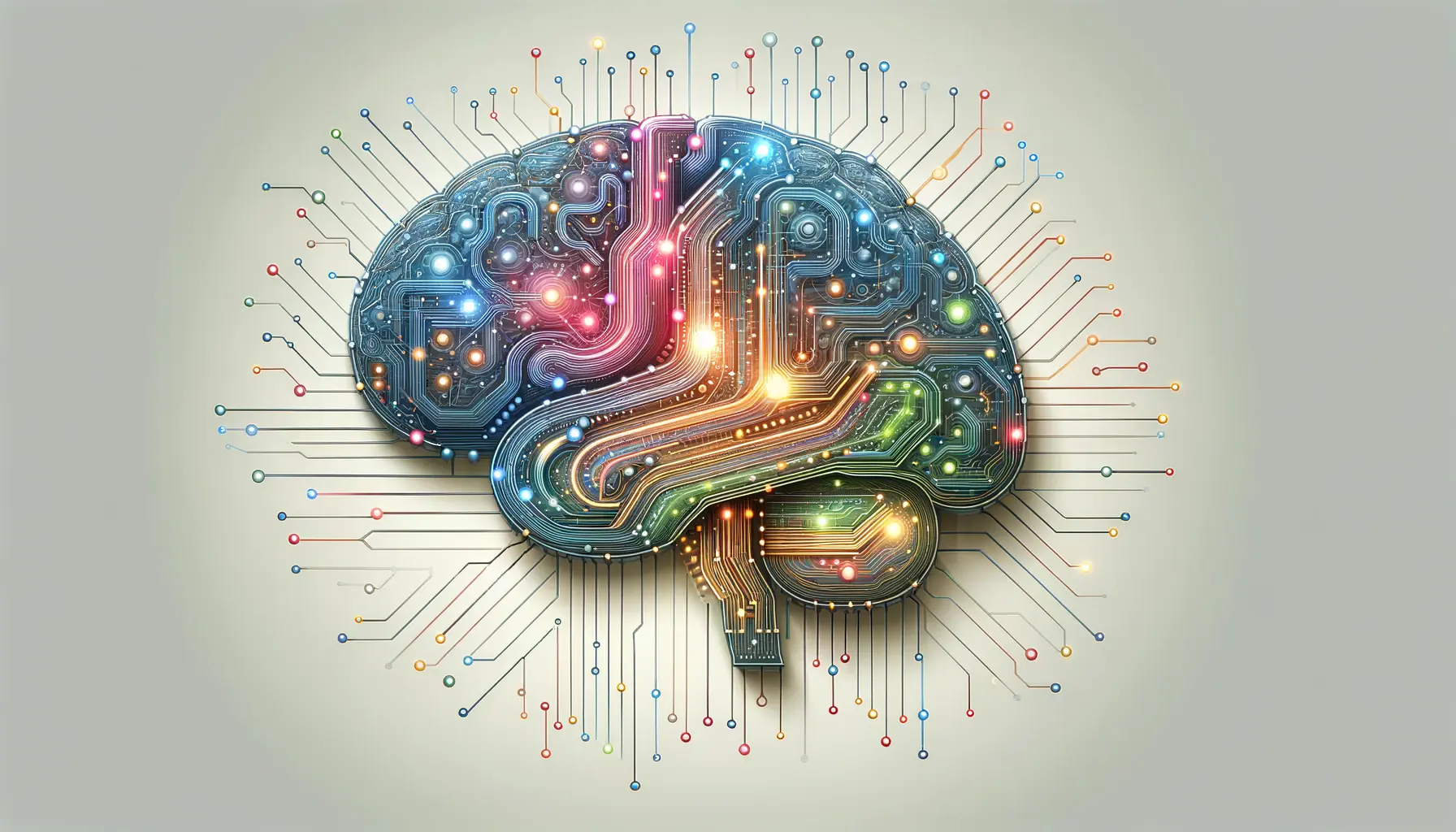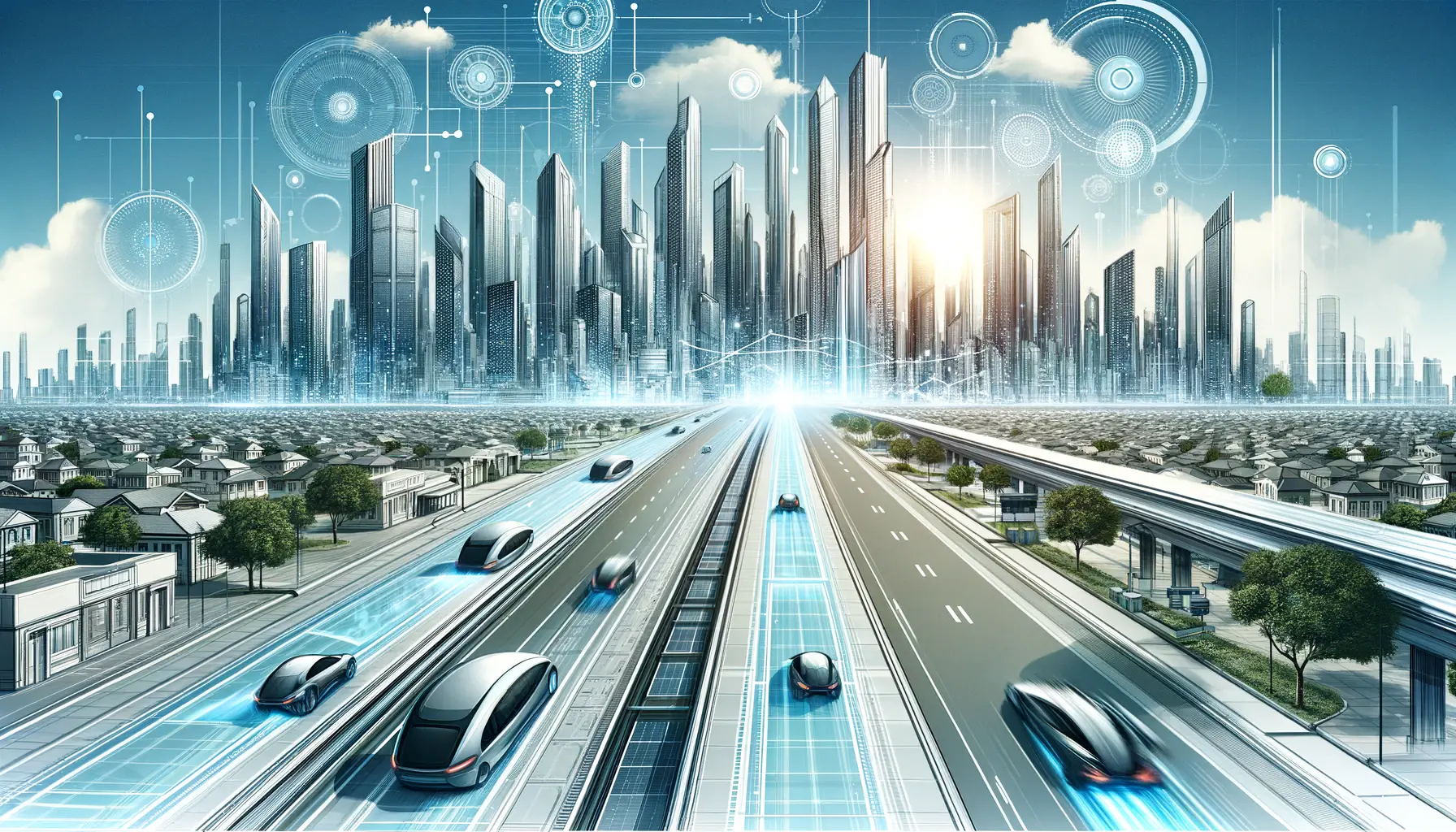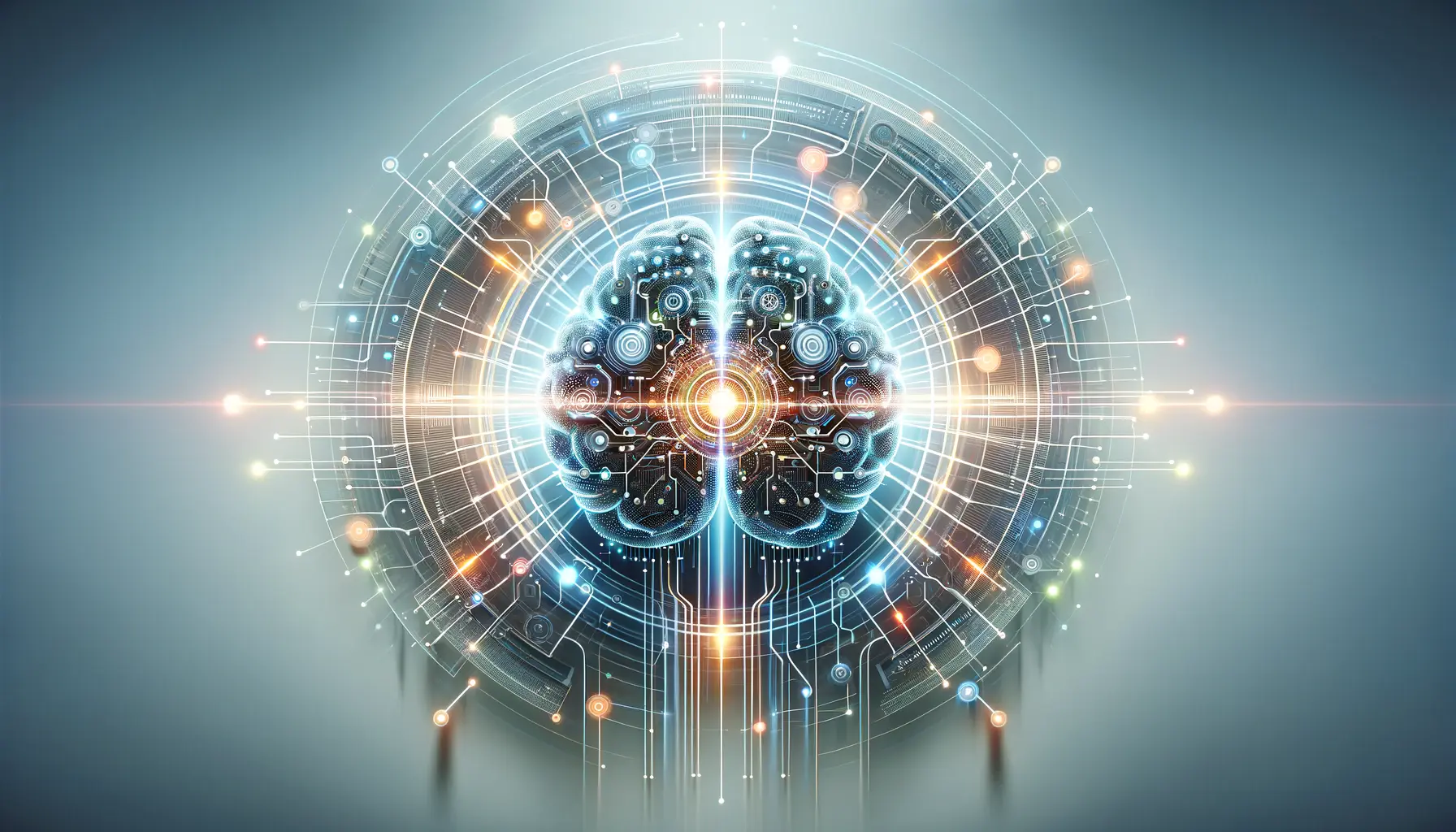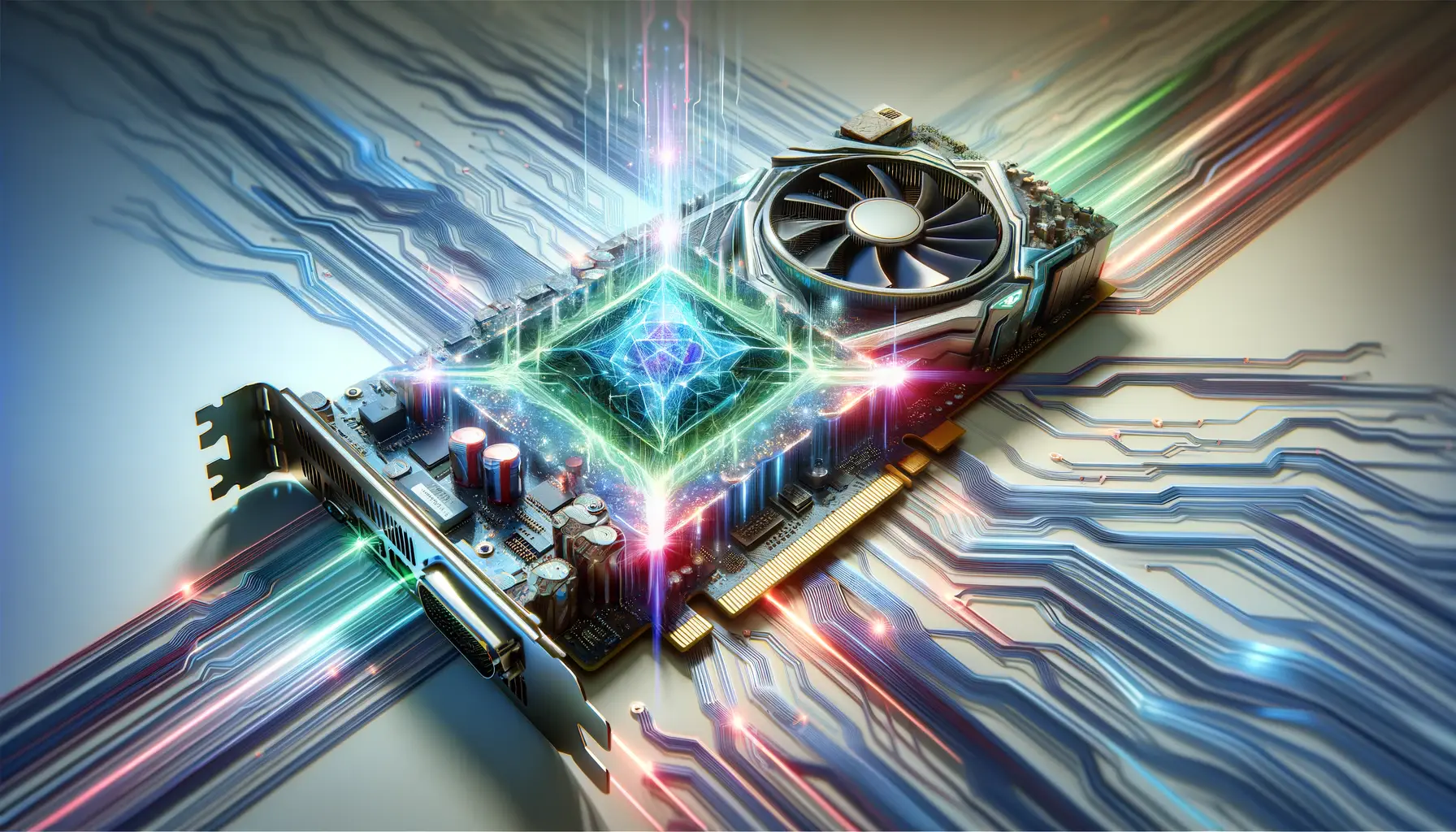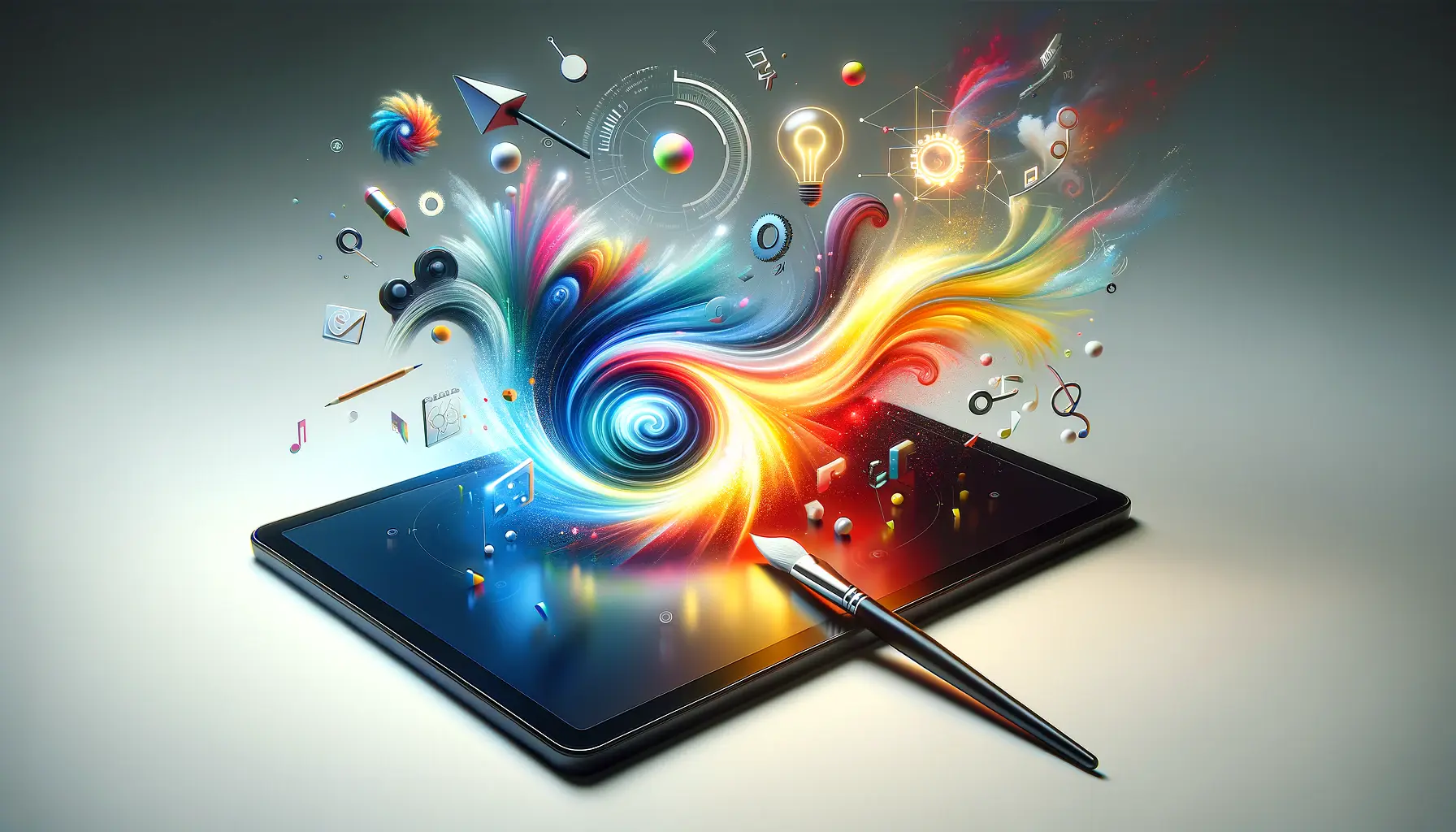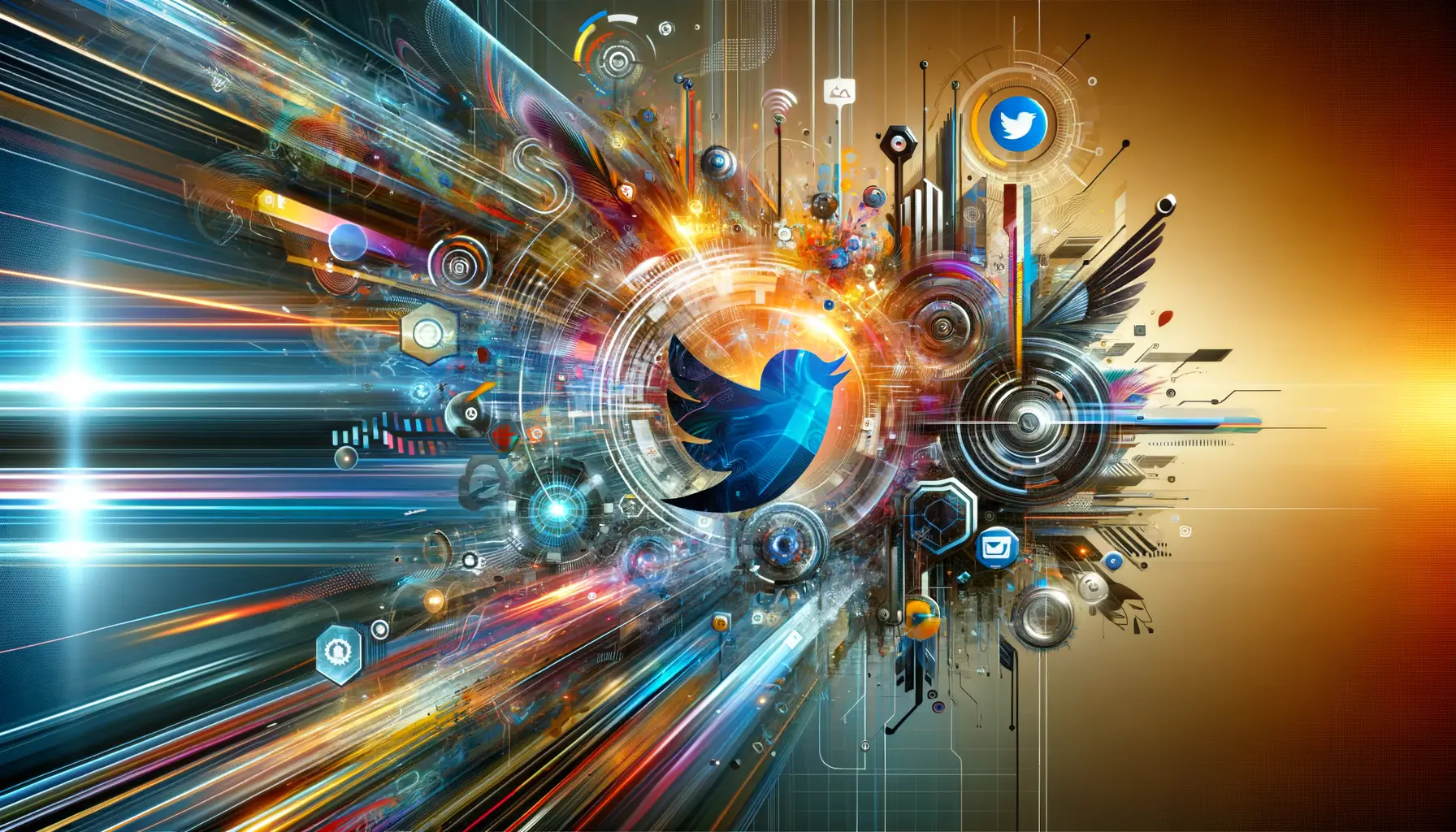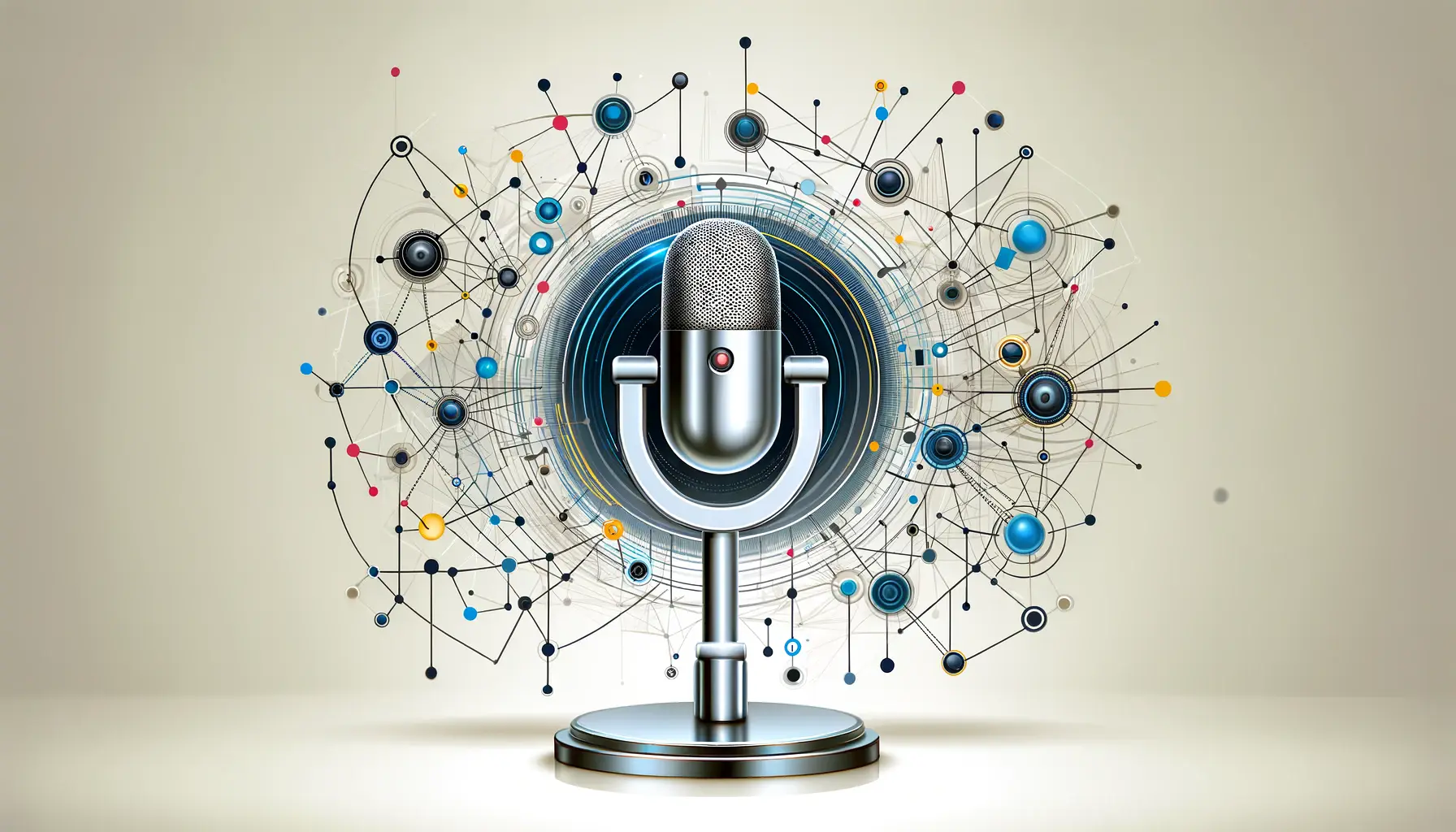The realm of artificial intelligence (AI) is witnessing a transformative era, particularly in the field of creative and generative AI.
Among the most intriguing advancements is the evolution of DALL-E, a groundbreaking technology developed by OpenAI that has the capability to generate highly realistic images from textual descriptions.
This technology not only showcases the potential of AI in understanding and interpreting human language but also opens up new avenues for creativity, design, and visual communication.
As we delve into the future developments in DALL-E technology, it’s essential to understand the trajectory of this innovation and its implications for various industries, from art and design to marketing and beyond.
The continuous development of DALL-E is a testament to the rapid progress in machine learning and AI.
With each iteration, DALL-E becomes more sophisticated, offering higher resolution images, more accurate interpretations of complex descriptions, and even ethical considerations in its deployment.
The exploration of future developments in DALL-E technology is not just about the technical advancements but also about understanding how these improvements can be harnessed to foster creativity, enhance visual content creation, and solve practical problems in novel and efficient ways.
- Understanding DALL-E’s Evolution
- Impact on Creative Industries
- Challenges and Ethical Considerations
- Integration with Other Technologies
- Future Applications and Possibilities
- Enhancing User Interactivity and Engagement
- Preparing for a DALL-E Driven Future
- Embracing the Future of Creativity with DALL-E
- DALL-E Technology: Future Developments FAQs
Understanding DALL-E’s Evolution
The Genesis and Growth of DALL-E
The inception of DALL-E by OpenAI marked a significant milestone in the field of generative AI.
Initially introduced to the public in 2021, DALL-E demonstrated an uncanny ability to create images from textual descriptions, bridging the gap between human creativity and machine interpretation.
This technology leveraged a variant of the GPT (Generative Pre-trained Transformer) model, specifically tailored for visual content, thereby setting a new standard for text-to-image conversion.
The evolution from its first version to DALL-E 2, and the anticipation of DALL-E 3, showcases a trajectory of increasing sophistication and capability, with improvements in image resolution, realism, and the model’s understanding of complex, nuanced prompts.
As DALL-E continues to evolve, its applications have expanded beyond mere novelty.
Designers, artists, and content creators utilize DALL-E to brainstorm ideas, create preliminary sketches, or even generate finished pieces of art.
This progression signifies not just technological advancement but also a shift in how creative work is conceptualized and executed, blending human intuition with AI’s computational power.
Technological Enhancements and Future Capabilities
The future developments in DALL-E technology are poised to introduce even more advanced capabilities.
Anticipated improvements include enhanced understanding of abstract concepts, better alignment with user intentions, and the ability to generate images with even higher fidelity.
These advancements are expected to further reduce the gap between AI-generated images and human-created art, making it increasingly difficult to distinguish between the two.
Moreover, future versions of DALL-E might incorporate more sophisticated ethical guidelines to prevent misuse, ensuring that the technology promotes creativity without infringing on copyright or ethical standards.
Another exciting prospect is the integration of DALL-E with other AI technologies, such as AI-driven design tools, virtual reality environments, and interactive media.
This integration could revolutionize the way we interact with digital content, making it more immersive, personalized, and engaging.
The potential for DALL-E to contribute to fields such as education, healthcare, and entertainment is vast, with the technology offering new ways to visualize complex information, create educational materials, or even generate personalized content for users.
The evolution of DALL-E reflects the broader trends in AI development, emphasizing the importance of creativity, ethical considerations, and interdisciplinary applications.
Impact on Creative Industries
Revolutionizing Art and Design
The advent of DALL-E technology has sparked a revolution in the art and design industries, offering unprecedented tools for creativity and innovation.
Artists and designers are now equipped with an AI collaborator that can bring their most imaginative concepts to life.
This collaboration between human creativity and AI’s computational power is transforming traditional workflows, enabling the creation of complex, detailed artworks and designs that were previously unimaginable.
- **Art Creation:** DALL-E enables artists to experiment with new styles and themes, pushing the boundaries of traditional art forms.
- **Design Prototyping:** Designers use DALL-E to quickly generate visual prototypes for products, interiors, and fashion, significantly speeding up the design process.
Enhancing Marketing and Advertising
In the marketing and advertising sectors, DALL-E’s ability to generate compelling visual content on demand is a game-changer.
Brands can now create customized imagery that resonates with their target audience more effectively, tailoring visuals to specific campaigns, messages, or consumer preferences with unprecedented ease and speed.
- **Personalized Advertising:** DALL-E facilitates the creation of highly personalized ad content, improving engagement rates and campaign performance.
- **Content Diversity:** With DALL-E, marketers can easily diversify their content, ensuring a fresh and varied visual presence across all platforms.
Transforming Media and Entertainment
The media and entertainment industry benefits from DALL-E’s capabilities in creating detailed, realistic images and scenes for movies, video games, and virtual reality experiences.
This technology not only enhances visual effects and storytelling but also reduces production costs and time, making high-quality content more accessible.
- **Visual Effects:** DALL-E can generate complex scenes and backgrounds, offering a cost-effective solution for small and independent filmmakers.
- **Game Development:** Game developers use DALL-E to create textures, landscapes, and character concepts, streamlining the game design process.
DALL-E’s impact on creative industries underscores the potential of AI to augment human creativity, offering tools that enhance, rather than replace, the creative process.
Challenges and Ethical Considerations
As DALL-E technology continues to evolve, it brings to the forefront a range of challenges and ethical considerations that must be addressed to ensure its responsible use.
The ability of DALL-E to generate realistic images from textual descriptions raises questions about copyright, authenticity, and the potential for misuse.
Understanding and navigating these challenges is crucial for the sustainable development of AI-driven creative technologies.
Copyright and Intellectual Property Issues
The intersection of AI-generated content with existing copyright laws presents a complex challenge.
DALL-E’s capability to produce images that might resemble existing artworks or photographs raises concerns about intellectual property rights and the need for clear guidelines to distinguish between AI-generated and human-created content.
- Developing frameworks to attribute AI-generated content properly.
- Ensuring creators are aware of and consent to the use of their works as training data.
Authenticity and Misinformation
The potential of DALL-E to create realistic images also poses risks in the context of misinformation and the manipulation of visual media.
Ensuring the authenticity of AI-generated content and preventing its misuse in creating false narratives or deepfakes is a significant ethical concern.
- Implementing verification mechanisms for AI-generated content.
- Promoting transparency about the use of AI in content creation.
Addressing Bias and Fairness
Like many AI technologies, DALL-E is not immune to biases present in its training data.
Addressing these biases to ensure fair and equitable outcomes across different demographics is essential.
Efforts to make DALL-E’s generated content inclusive and representative of diverse perspectives are ongoing challenges.
- Continuously auditing and updating training datasets to reduce biases.
- Engaging diverse groups in the development and testing phases.
The responsible development and deployment of DALL-E technology require a balanced approach, addressing ethical challenges while harnessing its creative potential.
Integration with Other Technologies
The potential of DALL-E extends far beyond standalone applications, with its integration into broader technological ecosystems offering exciting possibilities.
By combining DALL-E with other AI technologies and digital tools, we can unlock new capabilities and applications that enhance both creativity and functionality across various domains.
Combining DALL-E with GPT for Enhanced Creativity
Integrating DALL-E with language models like GPT (Generative Pre-trained Transformer) creates a powerful synergy between visual and textual creativity.
This combination allows for the generation of not only images but also accompanying narratives, descriptions, or creative writing, offering a holistic approach to content creation.
Such integration can revolutionize storytelling, marketing, and educational content by providing a seamless blend of text and imagery that is both coherent and contextually relevant.
Augmenting Virtual and Augmented Reality Experiences
The use of DALL-E in virtual reality (VR) and augmented reality (AR) applications can significantly enhance the immersive experience by generating dynamic, detailed, and interactive environments.
In VR, DALL-E can create lifelike scenes and landscapes on demand, while in AR, it can overlay realistic objects or information onto the real world, offering vast potential for gaming, training simulations, and interactive learning.
Improving User Experience in Software Applications
DALL-E’s integration into software applications can dramatically improve user experience by providing personalized and dynamic visual content.
For instance, design tools can leverage DALL-E to offer users a vast array of custom illustrations, icons, and layouts based on their specific requirements, streamlining the design process and sparking creativity.
Similarly, educational software can use DALL-E to generate visual aids and illustrations tailored to the curriculum, making learning more engaging and accessible.
Integrating DALL-E with other technologies not only amplifies its capabilities but also opens up new avenues for innovation, making it a versatile tool in the digital age.
Future Applications and Possibilities
The horizon for DALL-E technology is vast and filled with potential, promising to revolutionize how we interact with digital content and conceive creativity.
As we look forward to the future, several applications and possibilities emerge, highlighting the transformative impact DALL-E could have across various sectors.
Personalized Education and Learning
One of the most promising applications of DALL-E lies in the field of education, where it can be used to create personalized learning materials.
By generating images, diagrams, and visual aids tailored to each student’s learning style and needs, DALL-E can make education more accessible and engaging.
This personalized approach could help in simplifying complex concepts, catering to diverse learning preferences, and enhancing overall educational outcomes.
Advancements in Healthcare Visualization
In healthcare, DALL-E can play a crucial role in medical imaging and patient education.
By generating accurate and detailed visualizations of medical conditions, treatments, and procedures, DALL-E can aid in patient understanding and decision-making.
Furthermore, it could assist medical professionals in creating visual aids for research, presentations, and educational purposes, making complex medical information more comprehensible.
Innovations in Entertainment and Media
The entertainment and media industries stand to benefit significantly from DALL-E’s advancements.
In filmmaking, for example, DALL-E could be used to generate concept art, storyboards, and even visual effects, reducing production costs and time.
In gaming, DALL-E’s ability to create detailed environments and characters can enhance game design and development, offering players more immersive and visually captivating experiences.
Enhancing Accessibility and Inclusivity
DALL-E’s potential to generate diverse and inclusive content can significantly impact accessibility and representation in digital media.
By ensuring that visual content reflects a wide range of cultures, identities, and experiences, DALL-E can contribute to more inclusive digital spaces.
This inclusivity is crucial for fostering a sense of belonging and representation across all media forms.
The future applications of DALL-E are not just about enhancing creativity but also about solving real-world problems, making information more accessible, and creating more inclusive and personalized digital experiences.
Enhancing User Interactivity and Engagement
The evolution of DALL-E technology is not only about creating images but also about fostering a new level of interactivity and engagement in digital experiences.
As DALL-E becomes more integrated into various platforms and applications, its potential to transform user interactions becomes increasingly evident.
Interactive Content Creation
One of the key areas where DALL-E can enhance user engagement is through interactive content creation.
Users can interact with applications in real-time, providing textual prompts to generate custom images, thereby participating actively in the creative process.
This capability can be particularly impactful in:
- Educational platforms, where students can explore concepts through visual aids created on-the-fly.
- Marketing and advertising, allowing brands to engage with their audience by co-creating personalized visual content.
Customized Digital Experiences
DALL-E’s ability to generate tailored content based on user input opens up new possibilities for customized digital experiences.
This personalization can significantly enhance user satisfaction and engagement across various platforms, including:
- Social media, where users can create unique, AI-generated images to share with their network.
- E-commerce, offering personalized product visualizations to help consumers make informed decisions.
Enhancing Visual Communication
With DALL-E, the way we communicate visually, both online and in digital media, is set to undergo a significant transformation.
By enabling the generation of complex, nuanced images, DALL-E can help convey ideas and emotions more effectively, enriching digital communication in:
- Online forums and communities, where users can use custom images to express thoughts and ideas.
- Professional presentations and reports, enhancing the visual impact of information and data.
DALL-E’s impact on user interactivity and engagement highlights its role not just as a tool for content creation but as a catalyst for more dynamic and personalized digital experiences.
Preparing for a DALL-E Driven Future
As we stand on the brink of a new era in digital creativity, powered by advancements in DALL-E technology, it’s crucial for individuals and organizations alike to prepare for the changes and opportunities that lie ahead.
Embracing DALL-E requires not only technological readiness but also a shift in mindset towards creativity, collaboration, and ethical considerations.
Skills Development and Education
To leverage the full potential of DALL-E, both current and future generations need to develop a blend of creative and technical skills.
This involves:
- Understanding the basics of AI and machine learning to effectively interact with DALL-E and similar technologies.
- Enhancing creative skills to conceptualize and articulate ideas that can be brought to life through AI-generated imagery.
Collaborative Creativity
The integration of DALL-E into creative processes encourages a new form of collaboration between humans and AI.
This collaborative creativity can lead to:
- Innovative approaches to art, design, and content creation, where AI’s capabilities complement human creativity.
- Interdisciplinary projects that blend technology, art, and science in ways previously unimaginable.
Ethical and Responsible Use
As with any powerful technology, the ethical and responsible use of DALL-E is paramount.
Stakeholders must:
- Develop guidelines and best practices for the use of AI in creative endeavors, ensuring respect for intellectual property and avoiding the propagation of biases.
- Promote transparency in the use of AI-generated content, making clear the role of AI in the creative process.
Adapting to Changing Industries
The impact of DALL-E and similar technologies will be felt across many industries, necessitating adaptation and innovation.
This includes:
- Reimagining business models to incorporate AI-driven content creation and personalization.
- Staying abreast of technological advancements to remain competitive in a rapidly evolving digital landscape.
Preparing for a DALL-E driven future involves embracing the technology’s potential while navigating its challenges with creativity, collaboration, and ethical consideration.
Embracing the Future of Creativity with DALL-E
The exploration of future developments in DALL-E technology reveals a landscape brimming with potential, poised to redefine the boundaries of creativity, innovation, and digital interaction.
As we delve into the myriad possibilities that DALL-E presents, it becomes clear that this technology is not merely a tool for generating images but a catalyst for a broader transformation across various sectors.
The implications of DALL-E’s evolution extend beyond the art and design realms, touching upon education, healthcare, entertainment, and beyond, promising to enrich human experiences with a new layer of creativity and personalization.
Key Takeaways for a DALL-E Enhanced Future
Reflecting on the insights gathered, several key takeaways emerge, underscoring the importance of readiness, adaptability, and ethical consideration as we step into a future shaped by DALL-E:
- The integration of DALL-E into creative workflows heralds a new era of collaborative creativity, where the distinction between human and AI-generated content blurs, fostering a symbiotic relationship that enhances the creative process.
- Future developments in DALL-E technology promise to revolutionize industries by offering personalized and immersive experiences, highlighting the need for businesses and professionals to adapt to these changes to stay competitive and relevant.
- Addressing the ethical challenges posed by DALL-E, including copyright issues, misinformation, and biases, is crucial for harnessing its potential responsibly, ensuring that the technology benefits society as a whole without compromising individual rights or integrity.
In conclusion, the journey into the future of DALL-E technology is filled with excitement and challenges alike.
As we anticipate further advancements, it becomes imperative for individuals, organizations, and society to engage with this technology thoughtfully, embracing its potential to transform our world while navigating the ethical and practical challenges it presents.
The future of creativity, powered by DALL-E, holds the promise of a more personalized, immersive, and inclusive digital landscape, opening new avenues for expression, learning, and engagement.
By preparing fo
DALL-E Technology: Future Developments FAQs
Explore the most common inquiries about the future of DALL-E technology and its impact on various fields.
DALL-E is an AI model developed by OpenAI that generates images from textual descriptions, blending creativity and technology.
It revolutionizes art and design by enabling the creation of unique visuals from text, enhancing creativity and efficiency.
Concerns include copyright, authenticity, and the potential for misuse, emphasizing the need for responsible use and guidelines.
Yes, by generating personalized learning materials and visual aids, it can make education more engaging and accessible.
Future versions will likely offer higher image quality, better understanding of complex prompts, and ethical usage frameworks.
Integration with technologies like GPT enhances creativity, offering seamless text-to-image capabilities for diverse applications.
Challenges include addressing biases in AI, ensuring diversity in generated content, and managing the technology’s rapid development.
How can industries prepare for DALL-E’s advancements?
[/title][desc]By fostering skills in AI and creativity, adopting ethical practices, and staying informed on technological trends and app


